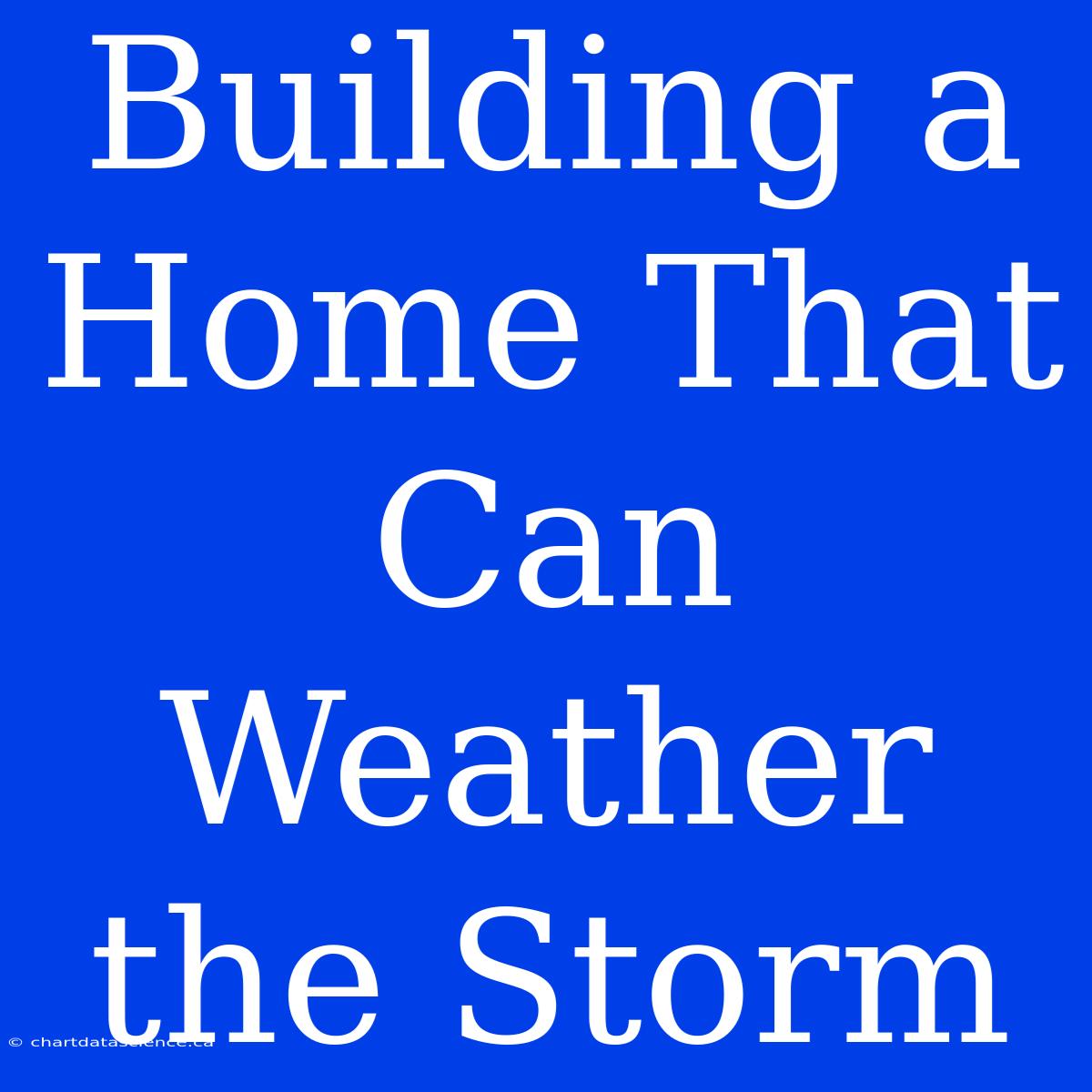Building a Home That Can Weather the Storm: A Guide to Resilient Construction
We all want a home that’s a haven, a place to relax and feel safe. But what happens when Mother Nature throws a tantrum? In a world increasingly impacted by extreme weather, building a home that can weather the storm is no longer just a smart idea, it’s a necessity.
So, how do you create a home that can withstand the forces of nature? It’s not just about thick walls and sturdy roofs, it’s about a comprehensive approach to design and construction that considers every aspect of your home’s resilience.
Choosing the Right Foundation: The Bedrock of Your Home’s Strength
The foundation is the cornerstone of your home, literally. A solid foundation will help your home stay level and stable, even in the face of earthquakes or shifting ground. There are several types of foundations to consider, with each having its own benefits and drawbacks.
- Concrete Slab: This is a cost-effective option, especially in areas with stable ground. It’s also great for reducing moisture problems.
- Crawl Space: This provides some space for storage or access to utilities, and it's a good option for areas with sloping ground.
- Basement: A basement offers additional living space and can act as a safe room during storms. However, it’s more costly to build and may not be suitable in areas with high groundwater tables.
Strong Walls That Stand Tall: The First Line of Defense
The walls of your home are your first line of defense against wind and rain. Consider using sturdy materials like:
- Concrete Blocks: Known for their strength and fire resistance.
- Brick: Classic, beautiful, and incredibly durable.
- Engineered Wood: Offers strength and affordability.
- Steel Framing: This is a lighter, more sustainable option, and it’s great for high-wind areas.
A Roof That Won’t Blow Away: Protecting You From the Elements
Your roof is your home’s shield against the elements, so choose materials that are strong, weather-resistant, and long-lasting.
- Asphalt Shingles: An affordable and common option.
- Metal Roofing: Durable, fire-resistant, and reflects heat.
- Tile Roofing: Beautiful and long-lasting, with excellent fire resistance.
Windows That Stand Strong: Minimizing Damage and Maintaining Your View
Your windows are important for natural light and ventilation, but they can also be weak points during a storm. Choosing impact-resistant windows can significantly reduce the risk of damage from wind and flying debris.
Think About Your Surroundings: Protecting Your Home From Nature’s Fury
Your home's location and the surrounding landscape play a critical role in its resilience. Here are some things to consider:
- Trees: While trees add beauty, they can also pose a hazard during a storm. Consider trimming or removing trees that are close to your home.
- Slope: A steep slope can lead to soil erosion and foundation problems.
- Drainage: Adequate drainage is essential to prevent flooding around your home.
Building a Home That Can Weather the Storm: It's an Investment Worth Making
Building a home that can withstand the challenges of extreme weather may seem like an extra expense upfront, but it's an investment that will pay dividends for years to come. It’s about peace of mind, knowing your home is a safe haven, no matter what the weather throws your way.
Remember, each region has its unique set of challenges. It’s always best to consult with a qualified architect and engineer who can tailor your home's design to your specific location and needs. Building a home that can weather the storm is a wise choice, a responsible choice, and one that will help you enjoy your home for many years to come.

